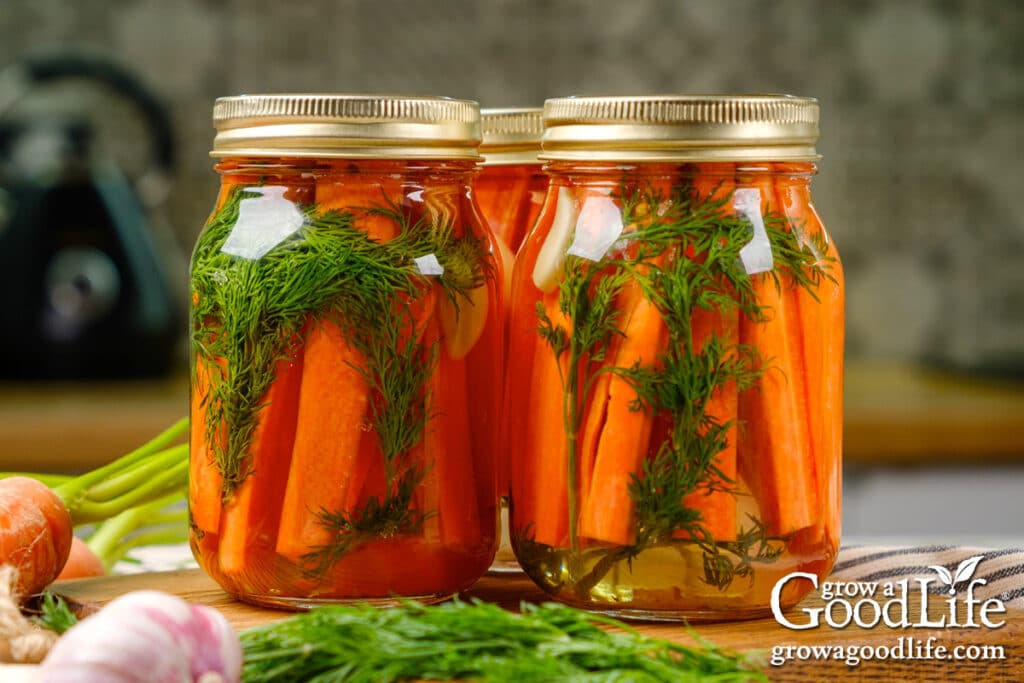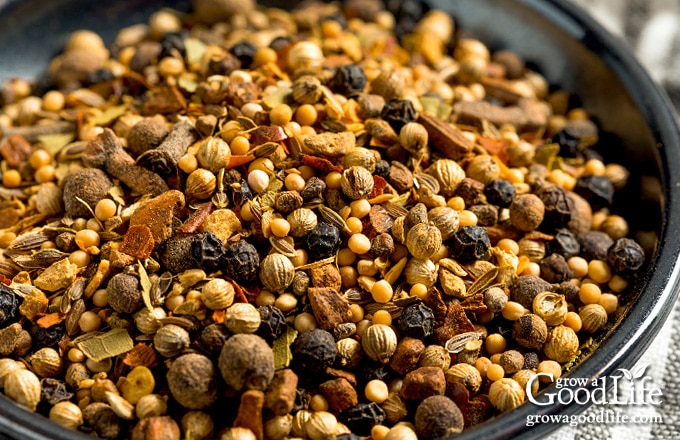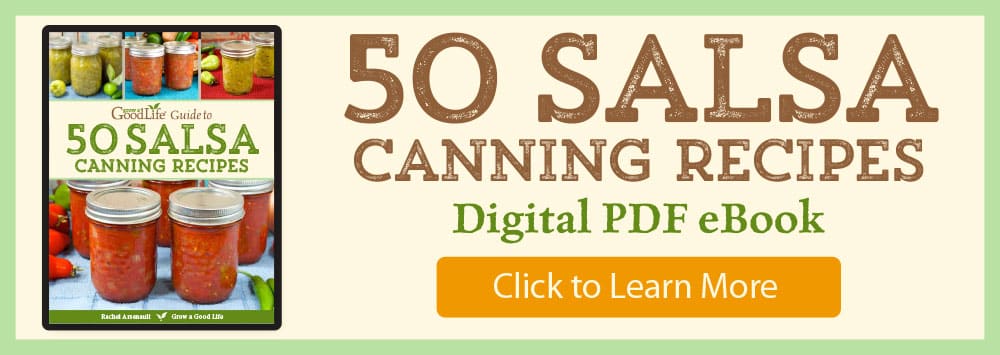How to Modify Pickle and Relish Canning Recipes Safely
This post may contain affiliate links, which means that I may receive a commission if you make a purchase using these links. As an Amazon Associate I earn from qualifying purchases.
Want to tweak your pickles and relishes? Learn which changes and substitutions are safe for home canning. From vinegar swaps to spice adjustments, discover how to personalize your pickled foods without compromising food safety.
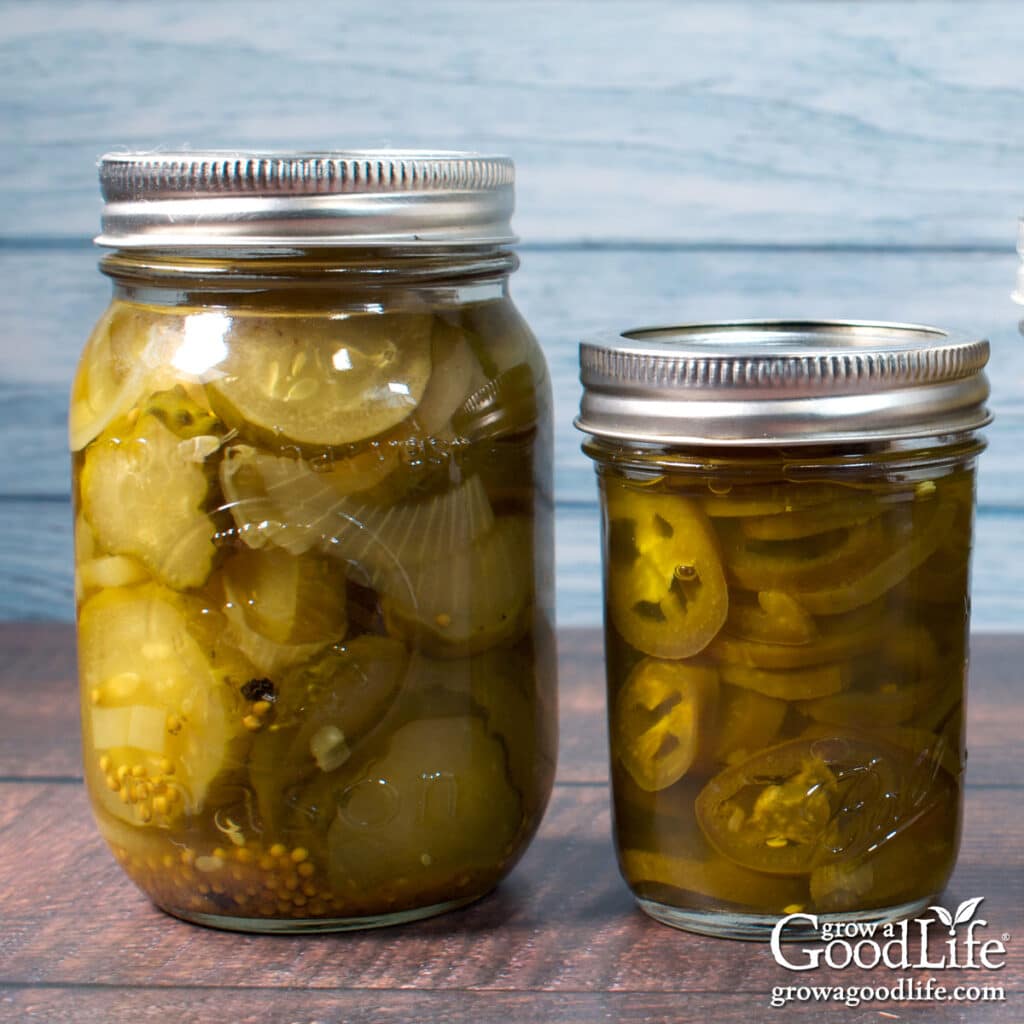
Pickled vegetables and relishes are some of the most flavorful and customizable foods you can make at home. Whether you love classic dill cucumber pickled spears, tangy bread-and-butter slices, spicy jalapeños, or zucchini relish, there’s plenty of room to get creative with herbs, spices, and sweet or savory flavor profiles.
Still, when it comes to canning, safety must come first. Because pickled foods rely on acidity for preservation, it’s essential to follow lab-tested recipes and only make changes that won’t affect the pH balance.
The good news? There are many safe substitutions that let you tailor flavor and texture while still staying within proven, research-backed guidelines.
This article explores what you can and can’t change when canning pickled vegetables and relishes so you can preserve them safely.
This guide is part of our Safe Canning Substitutions Series, where we explore approved ways to customize tested canning recipes without compromising safety. From tomatoes to pickles, fruits, vegetables, and more, each guide dives into what you can safely change, and what to avoid.
👉 Learn more in the Safe Changes and Substitutions for Home Canning Recipes overview.
Why Safety Matters
When canning pickled vegetables and relishes, food safety is just as important as flavor. While these recipes may seem simple, just vegetables, vinegar, and seasonings, preserving them safely requires a careful balance.
Canning recipes for pickles and relishes rely on the acidity of vinegar in combination with various ingredients. To ensure that the product is shelf-stable, it must be processed in a boiling water bath canner. Maintaining a high-acid environment, with a pH of 4.6 or lower, is crucial to prevent the growth of molds and bacteria. Tested canning recipes are specifically designed to achieve this balance.
Luckily, there’s plenty of room to customize your pickles and relishes safely. In the next section, we’ll go over what changes are considered safe, including tips for adjusting the type of vinegar and spices so you can confidently adapt your recipes without compromising food safety.
Safe Adjustments to Pickle and Relish Canning Recipes
Pickling is one of the most adaptable forms of home canning, offering plenty of flexibility to suit your taste. While it’s important to follow tested recipes closely to ensure safety, you can make several ingredient changes without compromising processing guidelines or food safety.
Here are the adjustments you can safely make when canning pickles and relishes:
Swap the Type of Cucumber
Pickling cucumbers are varieties that are bred specifically for preserving. They’re typically short, blocky, thin-skinned, and have fewer seeds than slicing cucumbers. They also stay crisp better during the pickling process. Here are some popular examples:
Common Pickling Cucumber Varieties:
- Boston Pickling: A classic heirloom with a crisp texture and great flavor, about 3 to 6 inches long.
- National Pickling: Developed for commercial pickling. It produces dark green cucumbers that grow to approximately 5 inches in length.
- Parisian Pickling: A small and tender European variety often used for gherkins or cornichons.
- Calypso: Known for its uniform size and high productivity, it is ideal for pickling.
These varieties are all well-suited for canning, as they maintain a firm texture and absorb brine flavors nicely.
Fresh pickling cucumbers are best for home canning because of their crisp texture and lower water content. However, you can safely substitute with slicing, English, and grocery store cucumbers. If using supermarket cucumbers, peel them first to remove any wax coating, which can prevent the brine from properly penetrating the vegetables.
Use any Bulb Onion
You can use any bulb onion in recipes that call for onions, including red, white, or yellow onions. You can also reduce or omit the onion if you prefer, but don’t increase the amount called for in the recipe.
In pickled and relish canning recipes, bulb onions are commonly used to add flavor, texture, and sweetness. You can safely use any variety of globe onion in equal amounts, though each type brings a slightly different flavor to the finished product. Here are some common examples:
Types of Bulb Onions Used in Pickled Recipes:
- Yellow Onions: The most common type used in home canning. They have a strong, savory flavor that mellows when pickled, adding depth to brines and relishes.
- White Onions: Milder and slightly sweeter than yellow onions, with a cleaner, sharper bite.
- Red Onions: Mild, slightly sweet, and visually striking. They add a beautiful pink color to pickles and relishes.
- Sweet Onions: Vidalia, Walla Walla, Texas Sweet, are known for their high sugar content and mild flavor. These are excellent in sweet pickle and relish recipes, though their higher water content can soften texture slightly when canned.
Swap Varieties of Peppers
You can substitute any sweet or hot pepper in equal amounts in tested recipes, depending on your flavor and heat preference. You can mix colors and heat levels for variety and visual appeal.
Here are some great options:
- Bell Peppers (Green, Red, Yellow, Orange): Classic choice for relishes and sweet pickles. Adds a mild pepper flavor and vibrant color.
- Jalapeño Peppers: Popular for pickled pepper rings and hot pepper relishes. Adds a punch of heat without overwhelming.
- Serrano Peppers: Spicier than jalapeños, with a crisp texture. Excellent in mixed hot pickles.
- Cayenne Peppers: Thin and fiery, often sliced or added whole for a big kick.
- Thai or Bird’s Eye Chiles: Very hot and small, use in small amounts to infuse heat into the brine.
It’s also safe to reduce or omit peppers entirely, but do not increase the quantity beyond what the recipe specifies.
Adjust the Salt
Salt enhances the flavor and texture of pickles, but it’s not required for safety in most pickled vegetables and relishes. Salt is often used during the pre-soak process to draw out moisture, improve texture, and help the brine penetrate more evenly. After soaking, the vegetables are usually rinsed to remove excess salt.
You can safely reduce or omit salt in most canned pickled vegetable and relish recipes. Just keep in mind that salt contributes to flavor and texture, so less salt may lead to softer pickles and an altered taste.
Try these tested low-sodium recipes:
- Reduced Sodium Sliced Dill Pickles (NCHFP)
- Reduced Sodium Sliced Sweet Pickles (NCHFP)
- Reduced-Salt Dill Pickles (Ball)
Note: Do not reduce salt in fermented pickles or sauerkraut. Salt is essential for safe fermentation.
Swap the Vinegar
All tested pickling recipes require vinegar with 5% acidity to maintain a safe pH level. You may safely substitute one 5% vinegar for another:
- Distilled White Vinegar: A clear vinegar made by distilling corn and rye. It has a clean and sharp flavor.
- Apple Cider Vinegar: Made from fermented apples, it has a mild, slightly sweet flavor.
- Red or White Wine Vinegar: Made from fermented wine, it adds a slightly sweet, fruity flavor to the brine.
Do not reduce the total amount of vinegar or dilute it with extra water, this can make your pickles unsafe for canning.
Adjust the Sugar
Sugar balances acidity and adds flavor but is not required for safety in pickled vegetables or relishes. You can safely:
- Reduce or Omit the Sugar: This may make the product taste tart and slightly change texture.
- Substitute Honey: Expect a darker brine and a different flavor.
- Swap White and Brown Sugar: Brown sugar adds a deeper flavor and color.
Sugar substitutes: Most artificial sweeteners don’t hold up well to canning heat or brine flavor. However, there are a few tested recipes developed by NCHFP using Splenda:
Customize Spices and Seasonings
Here is where you can truly make your recipe your own! You can infuse flavor by adding whole dried spices (like mustard seed or dill seed) directly to jars.
Or, if you are using larger pickling spices like allspice berries, peppercorns, or crushed bay leaves, you can make a spice bag using a coffee filter or cheesecloth, simmer the bag in the brine to evenly flavor the liquid, and remove before filling jars.
Dried herbs and spices do not impact safety, so feel free to:
- Add, reduce, or omit dry seasonings like mustard seed, dill seed, coriander, peppercorns, bay leaves, or chili flakes
- Tuck a clove of garlic or a small dried chili into each jar for flavor
- Create your own homemade pickling spice blend to personalize the flavor.
You can also safely add 1 to 2 sprigs of fresh herbs to a jar. Just avoid large amounts of fresh herbs, as they can dilute acidity and affect pH balance.
Add Calcium Chloride for Crispness
Want crunchier pickles? You can safely add food-grade calcium chloride, like:
Follow the manufacturer’s directions. These additives do not affect acidity or safety, and no recipe adjustments are needed.
Unsafe Changes When Canning Pickles and Relishes
Pickled recipes offer a lot of flexibility, but not all changes are safe. Some adjustments can raise the pH level or interfere with proper heat penetration, increasing the risk of spoilage or foodborne illness. To keep your pickles safe and shelf-stable, avoid these unsafe modifications:
Don’t Change the Vinegar-to-Water Ratio
The acidity in pickled recipes is carefully balanced. Diluting the vinegar or increasing the water can raise the pH above 4.6, which may allow harmful bacteria like Clostridium botulinum to grow. Stick with the exact vinegar and water proportions listed in the tested recipe.
Don’t Use Vinegar with Less Than 5% Acidity
Always use vinegar that clearly states “5% acidity” on the label. Some specialty vinegar, like homemade, artisanal, or reduced-acid types, may not have enough acidity to make the recipe safe. When in doubt, choose standard distilled white or apple cider vinegar from a trusted brand.
Don’t Reduce or Skip Vinegar
Vinegar is essential for acidifying the recipe. Even if you prefer a milder flavor, never cut back on the total amount of vinegar in the recipe. Instead, look for a milder vinegar variety, like apple cider that still has 5% acidity.
Don’t Add Large Quantities of Fresh Herbs, Garlic, or Onions
While adding a small clove of garlic per jar is safe, adding large amounts of fresh ingredients like garlic, onions, or herbs can lower acidity. Use dried herbs and spices to safely boost flavor without affecting the pH balance.
Don’t Substitute Vegetables
Different vegetables have different densities and acid requirements. Some vegetables require a stronger pickling brine than others. Always follow a tested recipe designed for the vegetable you’re canning.
Don’t Reuse Pickling Brine for New Batches
Reusing leftover pickling brine might seem like a smart way to stretch your ingredients, but it can compromise the safety of your next canning batch. Whether or not it’s safe depends on how the brine was used.
Used Brine from Hot Pack Recipes: Do Not Reuse
In hot pack recipes, vegetables are simmered in the brine before being packed into jars. During this process, the vegetables absorb some of the vinegar, which reduces the acidity of the remaining brine. This lowered acidity means the leftover brine may no longer meet the necessary pH for safe water bath canning.
The bottom line is never to reuse brine from a hot pack recipe. Always make a fresh batch to ensure proper acidity and food safety.
Unused Brine from Raw Pack Recipes: Sometimes Okay
If you’re using a raw pack method, where raw vegetables are packed into jars and covered with hot brine, there may be leftover brine that wasn’t used to soak vegetables. In this case, it might be safe to reuse under specific conditions:
- The brine wasn’t diluted or excessively boiled down
- You’re using the same tested recipe and canning method
- The brine wasn’t in contact with vegetables
Even then, be aware that boiling or reducing brine too much can alter the flavor and possibly the acid balance. When in doubt, start fresh.
What to Do with Leftover Brine
Leftover brine can still be put to good use in the kitchen. Store it in the fridge and drizzle it over grilled meats, toss it in salads, or use it as a marinade.
Additional Tips for Safe Pickle and Relish Canning
These extra steps can help ensure your home canned pickles and relishes turn out delicious, crisp, and shelf-stable:
Choose the Best Produce
Always use fresh, high-quality vegetables. Avoid overripe, bruised, or moldy produce, as it can affect the safety and texture of your canned goods.
For cucumbers, trim 1/16-inch from the blossom end before pickling. The blossom end contains enzymes that can cause softening during storage.
Use the Right Salt
Use pickling or canning salt, a pure granulated salt with no additives. Avoid table salt, which contains iodine and anti-caking agents that can darken your pickles, make the brine cloudy, or alter flavor.
Follow the Recipe Instructions Exactly
Tested canning recipes are developed with specific chop sizes, weights, and measurements to ensure safe acidity and proper processing. Stick to the preparation and processing instructions in the recipe, including vegetable size and jar headspace.
Adjust for Altitude
If you live above 1,000 feet in elevation, you’ll need to adjust your processing time for safe results. Find your elevation at WhatIsMyElevation.com and refer to your canning altitude adjustment chart.
Water Bath Canning Altitude Adjustments:
- 1,001–3,000 ft: Add 5 minutes
- 3,001–6,000 ft: Add 10 minutes
- 6,001–8,000 ft: Add 15 minutes
- 8,001–10,000 ft: Add 20 minutes
Let Flavors Develop
Most pickles and relishes benefit significantly from resting on the shelf for at least 4 to 6 weeks after the canning process. During this time, the flavors have the opportunity to meld together, resulting in a more complex and well-rounded taste. This resting period not only enhances the overall flavor profile but also allows any harsh or sharp notes from the vinegar to mellow out.
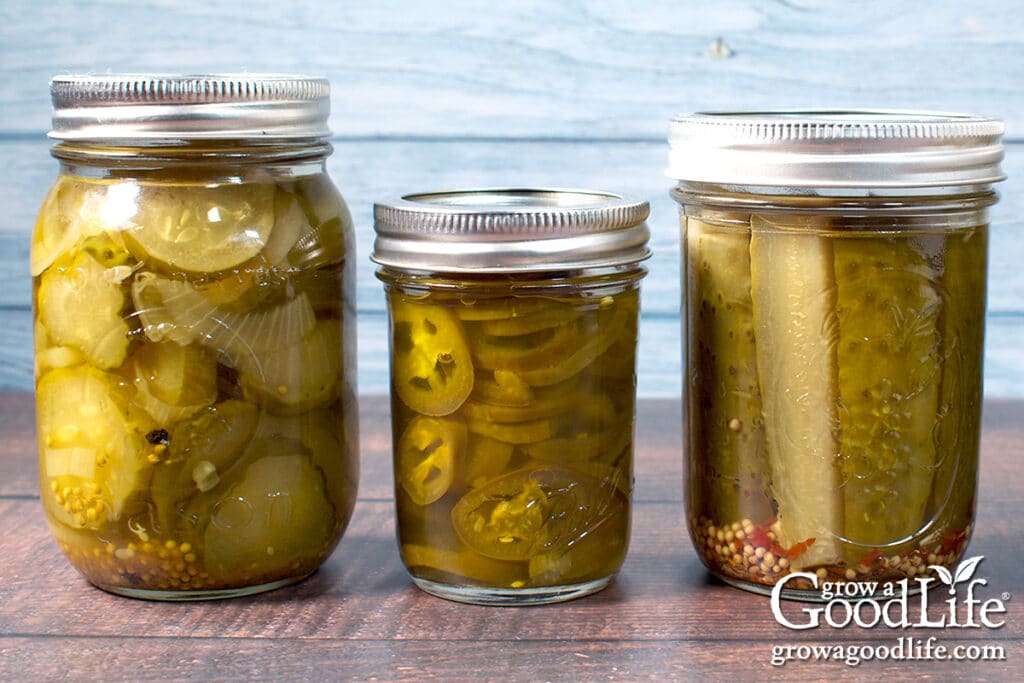
Final Thoughts
With a little knowledge and the right adjustments, pickling can be one of the most flexible and flavorful ways to preserve your harvest. Always follow tested recipes closely, stick to safe substitutions, and enjoy experimenting with herbs, spices, and vinegar combinations that make your home canned pickles and relishes your own.
Ready to try your hand at some recipes? Check out our full collection here:
👉 Explore Pickle and Relish Canning Recipes
This guide is part of our ongoing Safe Canning Substitutions series, where we explore what you can and can’t change in home canning recipes without compromising safety. Be sure to browse the other articles in the series for more helpful tips and confidence-boosting canning info.
Resources Used in this Article:
- Canning with Less Sugar. Penn State Extension.
- Play it Safe! Safe Changes and Substitutions to Tested Canning Recipes.
North Central Food Safety Extension Network (NCFSEN) - That Leftover Pickling Brine. National Center for Home Food Preservation.
- USDA Complete Guide to Home Canning, Part 6: Fermented Food and Pickled Vegetables.
- What Can You Change in a Canning Recipe? PennState Extension.
If you love salsa, consider adding our eBook, Grow a Good Life Guide to 50 Salsa Canning Recipes, to your resource library. This 72-page eBook is packed with a variety of delicious salsa recipes, including classic tomato salsas to roasted and grilled salsas to tomatillo and delicious fruit blends, all safe for water bath canning. It’s the perfect guide to help you preserve your garden harvests.

